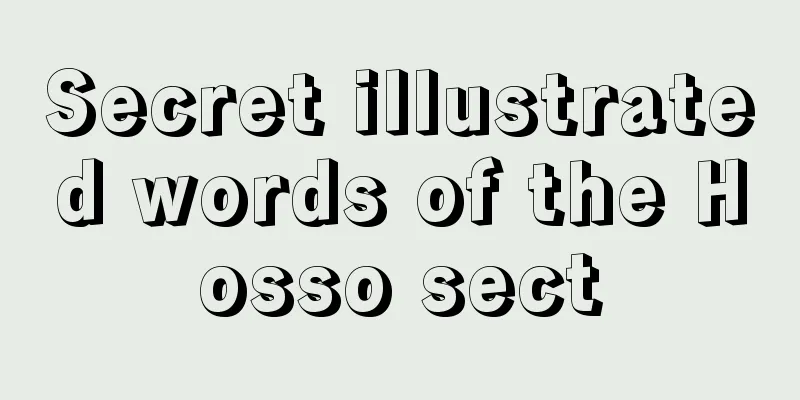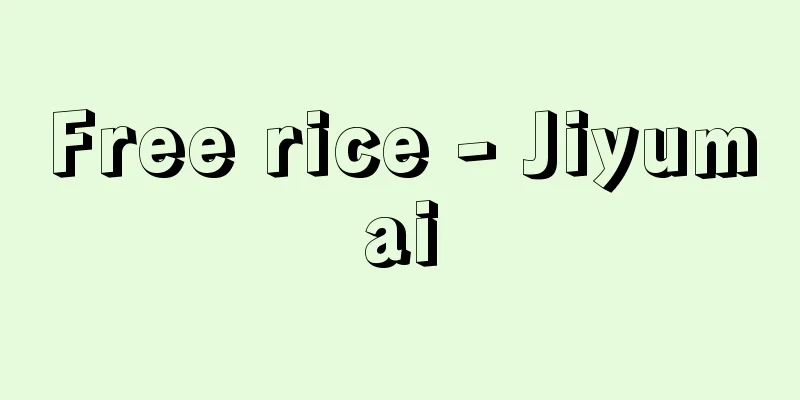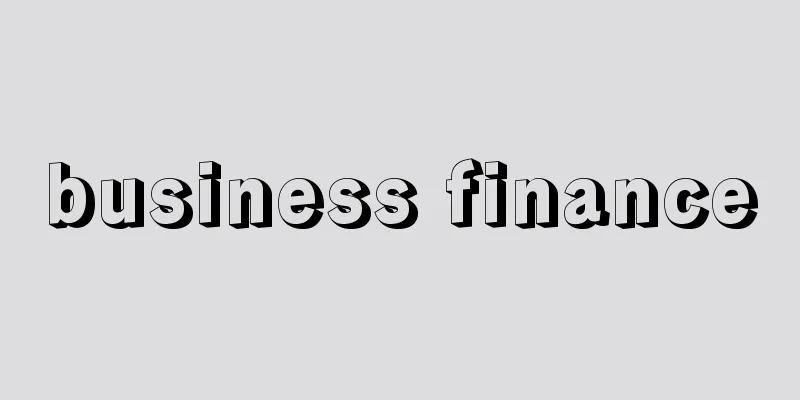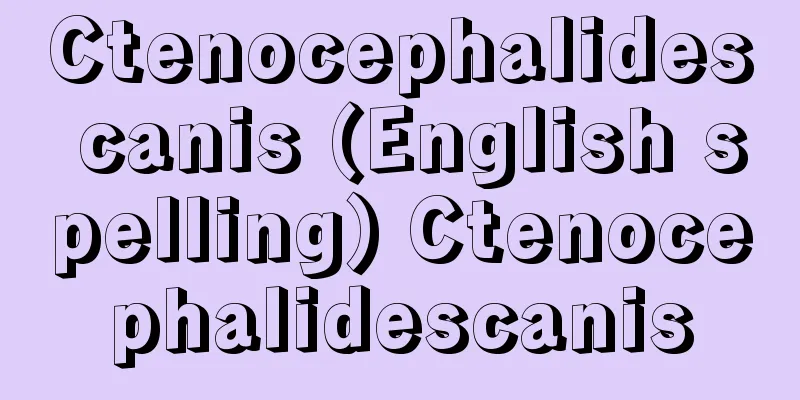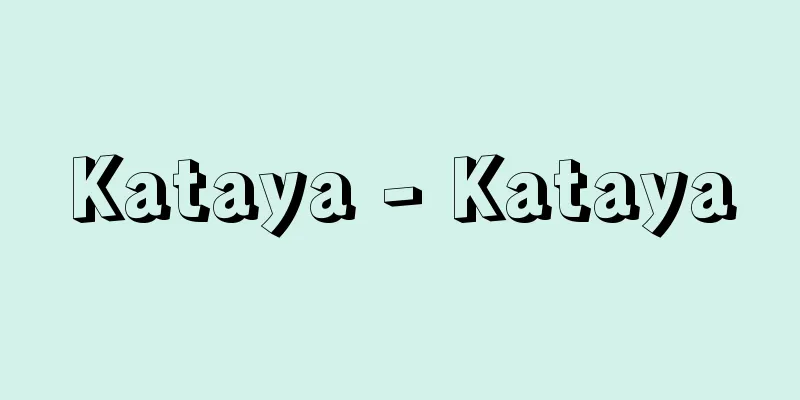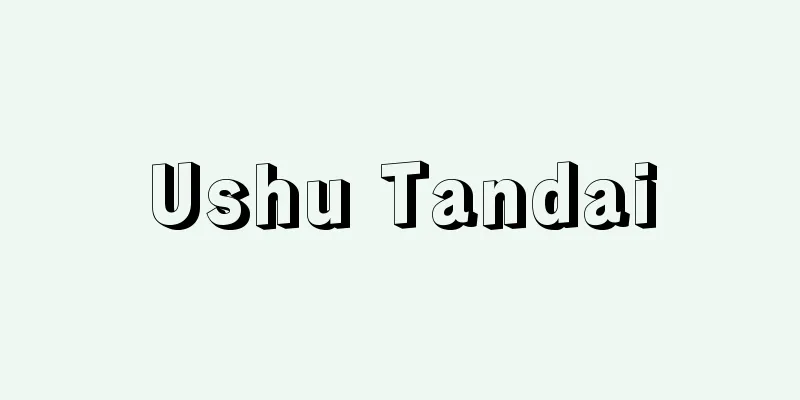Patent - tokkyo (English spelling)
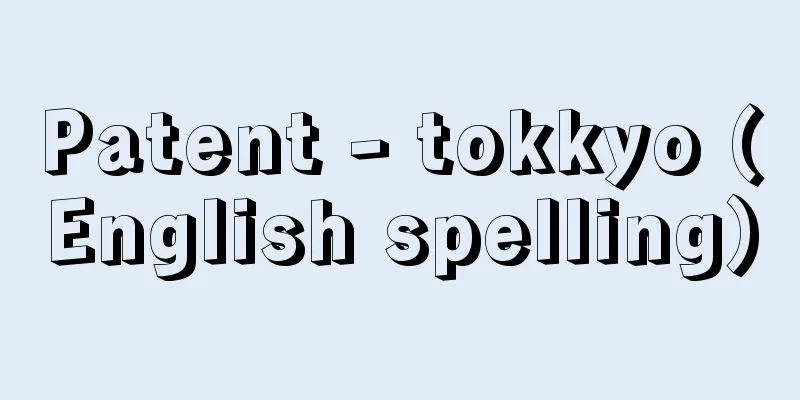
|
Also called a patent. In the broad sense, a patent is an administrative act that establishes the abilities, qualifications, rights, legal relationships, etc. of a specific person, but in the narrow sense, it is an administrative act in which the Patent Office establishes patent rights for the exclusive use of an invention for an inventor or his successor, as stipulated in the Patent Act. The acts by which the Patent Office grants rights to the four types of industrial property rights (industrial property rights) are essentially the same, but utility model rights, design rights, and trademark rights other than patent rights for inventions are simply called registrations. This article describes patents in the narrow sense. [Takino Hideo] HistoryThe patent system is said to have started when commercial cities developed in northern Italy after the Renaissance granted various commercial privileges, and then lords and kings in various parts of Europe granted monopoly charters to cover the finances of their royal families. The Statute of Monopoly of 1624 in England is considered to be the forerunner of modern patent law, and it is thought that the establishment of such an industrial protection system brought about the Industrial Revolution in England before other countries. After the French Revolution and the Industrial Revolution, European countries completed their modern nation-state status, and concluded the Paris Union Treaty for the Protection of Industrial Property (Convention of the Union for the Protection of Industrial Property) in 1883, taking the opportunity of the first World's Fair in Paris. In Japan, the Abbreviated Regulations on Monopoly, which had the appearance of a modern patent system, were promulgated in 1871 (Meiji 4), but were abolished the following year, waiting for the Patent Monopoly Ordinance of 1885. There were several revisions after that, and the name was changed to the Patent Law, and after joining the Paris Convention, the form of modern law was established in the revision of 1909. After the major revision in 1921 (Taisho 10), the treaty was revised again in 1959 (Showa 34), and as of 2006 (Heisei 18), it has been revised more than 30 times. Internationally, the World Intellectual Property Organization (WIPO) has prepared a draft treaty for the international harmonization of patent systems (it was rejected in 1994). Furthermore, during the Uruguay Round of the GATT (General Agreement on Tariffs and Trade), negotiations on Trade-Related Aspects of Intellectual Property Rights (TRIPs Negotiations) were concluded and came into effect as the TRIPS Agreement in the agreement establishing the WTO (World Trade Organization). Japan's patent law has also responded to these changes, with major amendments including the 1985 amendment which introduced an internal priority system when Japan joined the Patent Cooperation Treaty (PCT) in 1978, the 1989 amendment which introduced an improved multiple claim system and a term extension system, the 1993 amendment which severely restricted the number and content of amendments, the 1994 amendment which extended the patent term to 20 years from the filing date and added inventions of nuclear transmutation materials to the scope of patentability in order to comply with the TRIPS Agreement, the 2002 amendment which included programs and the like in the scope of inventions of things, and the 2004 amendment which revised the provisions on employee inventions. [Takino Hideo] Patent LawThe Patent Law (Law No. 121 of 1959) is a law that stipulates the contents of patent rights for new inventions and the procedures for granting them, and together with the Utility Model Law, the Design Law, and the Trademark Law, it constitutes the Industrial Property Law. A new invention (a highly advanced creation of a technical idea that utilizes the laws of nature) can be applied for before it is made public, and by being granted a patent after examination, a patent right can be obtained as an exclusive right to implement the invention. It prescribes systems such as request for examination (anyone can request it within three years from the date of application), disclosure (early disclosure of the contents of the invention regardless of delays in examination to prevent overlapping developments), and arbitration (retrials are allowed to ensure complete fairness in the examination). [Takino Hideo] Patent applicationIn order to obtain a patent, an application for a new invention must be filed with the Japan Patent Office and examined. Novelty and inventiveness are required to be granted. Novelty means that the invention is new and not publicly known at the time of application (an exemption can be applied for for presentations at academic conferences and exhibitions), and inventiveness means the degree of technical difficulty compared to previous inventions. A patent is granted to the first applicant for the same invention. A patent application is submitted with a written application clearly indicating the inventor and applicant, together with a specification and drawings (not required for chemical inventions, etc.) that clarify the content of the invention and state the scope of the patent claims, which are particularly important for determining the content of the rights. After filing, the specification can be amended within a certain period or at a certain time, but the scope of amendments is limited by the specification at the time of application. In the 1990s, "business model patents," which are said to have originated in the United States, became a hot topic not only in the industrial world but also in society, but in Japan, they were debated from various points of view, including the question of whether this business model can be considered a technical idea that utilizes the laws of nature. Regarding this point, according to a document on "Business-Related Inventions" published on the website of the Japan Patent Office in December 1999, the document states that business application systems that apply business system infrastructure technology based on basic computer technology and basic communication technology to actual business are protected by the Patent Law, and that patentability is to be determined according to the conventional examination standards. It also clearly states that business models and business ideas based on economic laws and management methods are not themselves protected. [Takino Hideo] PatentsIf the patent application is examined and there is no reason to reject it, a patent decision is made and the patent is granted once the registration fee is paid. The invention is then registered in the patent register, a patent certificate is issued, and patent rights are established. The effect of a patent right is to allow the exclusive commercial exploitation of the patented invention. The duration of a patent right is 20 years from the date of application, and can be extended for up to 5 years if there are special reasons. The patentee may work the patented invention himself, but may also assign it like any other property right, grant an exclusive license (registration is a requirement for it to take effect) to a third party and give that third party the exclusive right to work the invention, or work the invention himself and grant a non-exclusive license to a third party. Work means, in the case of an invention of a product, the production, use, transfer, lease, import or offer for transfer or lease of the product (including display for transfer or lease), in the case of an invention of a process, the use of the process, and in the case of a process of producing a product, the use, transfer, lease, import or offer for transfer or lease of the produced product in addition to the use of the process. Those who infringe patent rights may exercise civil rights, such as injunctive relief, damages, return of unjust enrichment, and restitution. Penalties for patent infringement were amended in 2006 (effective January 1, 2007) to set the maximum prison sentence for direct infringement at 10 years and the maximum fine at 10 million yen, and for fictitious infringement (indirect infringement) at 5 years and a fine at 5 million yen. In addition, prison sentences and fines may be imposed concurrently. The maximum fine for a corporation under the dual penalty provision is set at 300 million yen. Although patent rights have the potential to become very strong monopoly rights, patent holders are obligated to implement the rights, and there are provisions that limit statutory licenses and adjudicative licenses. Although these provisions are not widely applied in practice, they should be considered to have the potential to encourage the granting of licenses through normal agreements. A system of cancellation due to non-implementation is not recognized in line with international treaties. Although patent rights are an international system, they are independent in each country, and if you want to obtain patent rights in every country in the world, you must file a patent application in each country. Therefore, the Patent Cooperation Treaty (PCT) and the European Patent Convention (EPC) aim to standardize patent applications and, ultimately, patent rights. [Takino Hideo] Arbitration systemIn order to ensure the fairness of patent examination, a trial board has been established as a body for filing appeals against examinations, and as a judicial body with specialized knowledge or the first instance of an administrative trial, to hear appeals against the examiner's decision to reject an application, trials for patent invalidation, and trials for correction. As the trial is conducted by three or five trial judges, fairness can be ensured. The decision handed down by the trial judge is called a trial decision, and a lawsuit to set aside the trial decision can be filed under the exclusive jurisdiction of the Intellectual Property High Court. The trends in the number of patent applications and registrations over the past 10 years are as follows: ●1999 Number of applications: 405,655 "Nakayama Nobuhiro (ed.), "Patent Law Commentary" (1983, Seirin Shoin Shinsha)" ▽ "Yoshifuji Kosaku (ed.), Kumagai Kenichi (revised), "Patent Law Overview" 13th edition (1998, Yuhikaku)" ▽ "Japan Patent Office (ed.), "Industrial Property Law Article-by-Article Commentary" 16th edition (2001, Japan Institute of Invention and Innovation)" ▽ "Shibuya Tatsunori (ed.), "Intellectual Property Law Lectures 1: Patent Law, Utility Model Law, Seed and Seedling Law" 2nd edition (2006, Yuhikaku)" [References] | | | | | | | | | |Source: Shogakukan Encyclopedia Nipponica About Encyclopedia Nipponica Information | Legend |
|
パテントともいう。特許とは、広義には、特定人の能力、資格、権利、法律関係などを設定する行政行為をいうが、狭義には、特許法の定めるところにより、発明の独占的利用に関して特許庁が発明者またはその承継人に対して特許権を設定する行政行為をいう。特許庁が4種類の工業所有権(産業財産権)に対して権利を付与する行為は性質上同一であるが、発明に関する特許権以外の実用新案権、意匠権および商標権については、単に登録とよんでいる。本項では狭義の特許について記述する。 [瀧野秀雄] 沿革特許制度は、ルネサンス以降北部イタリアに発達した商業都市が各種の商業上の特権を与えたところから始まるとされ、その後ヨーロッパ各地の諸侯や王が専売的な特許状を付与して、王室の財政をまかなった。イギリスにおける1624年の専売条例Statute of Monopolyが近代特許法の先駆と考えられており、このような産業保護制度の整備が、他国に先んじてイギリスに産業革命をもたらしたとも考えられる。フランス革命と産業革命を経て近代国家を完成したヨーロッパの各国は、1883年工業所有権保護に関するパリ同盟条約(工業所有権保護同盟条約)を、パリの第1回万国博覧会の開催を契機に締結した。日本では、1871年(明治4)近代的特許制度の外観を有する専売略規則が公布されたが、翌年廃止されたまま、1885年の専売特許条例を待った。その後いくつかの改正があり、特許法と名称も改められ、パリ条約加盟後1909年の改正で近代法としての形を整えた。1921年(大正10)の大改正後、1959年(昭和34)にも大改正されるなど、2006年(平成18)現在までに30回を超える改正がなされている。国際的には、世界知的所有権機関(WIPO、ワイポ)による特許制度の国際的ハーモナイゼーション条約案が作成されている(1994年否決)。また、ガット(GATT、関税および貿易に関する一般協定)のウルグアイ・ラウンドにおいては、知的財産権の貿易関連側面に関する交渉(TRIP交渉)が妥結し、WTO(世界貿易機関)設立協定のなかのTRIPS協定として発効した。日本の特許法改正もこれらに対応しており、1978年の特許協力条約Patent Cooperation Treaty(PCT)への加盟を機に国内優先権制度を導入した1985年の改正、改善多項制と存続期間延長制度を導入した1989年の改正、補正の回数、内容を厳しく制限した1993年の改正、TRIPS協定に対応するため、特許期間を出願の日から20年に延長し、原子核変換物質の発明を特許対象に追加するなどした1994年の改正、プログラム等を物の発明に含まれるものとした2002年の改正、職務発明規定を見直した2004年の改正などがおもなものとしてあげられる。 [瀧野秀雄] 特許法特許法(昭和34年法律121号)は、新規な発明に対する特許権の内容と、これを付与する手続を定める法律で、実用新案法、意匠法、商標法とともに、工業所有権法を形成している。新規な発明(自然法則を利用した技術的思想の創作のうち高度なもの)は、公表する前に出願をし、審査を経て特許されることにより、発明を実施する排他的な権利としての特許権を取得することができる。審査請求(何人(なんぴと)も出願日から3年以内に請求できる)、公開(審査の遅れと関係なく発明の内容を早期に公表し開発の重複を防止する)、審判(審査の完全公正を期するため再審理を認める)などの制度を規定している。 [瀧野秀雄] 特許出願特許を受けるためには、新規な発明について特許庁に出願をし、審査を受けなければならない。特許されるためには新規性と進歩性が要求される。新規性とは出願のときに発明が新しいもので公表されていないこと(学会発表、博覧会出品には適用除外の申請ができる)であり、進歩性とは従来の発明からみた技術的困難の程度をいう。同一の発明については最初の出願者に特許が付与される。特許出願には、発明者、出願人を明示した願書に、発明の内容を明らかにし、とくに権利内容の確定に重要な特許請求の範囲を記載した明細書および図面(化学発明等では不要)を添付してこれらを提出する。出願後、一定の期間内または時期に明細書を補正することができるが、補正できる範囲は出願時の明細書によって制約を受けている。 1990年代において、アメリカが発祥の地とされている「ビジネスモデル特許」が産業界だけでなく社会的な話題となったが、日本においてはこのビジネスモデルが自然法則を利用した技術的思想といえるのかどうか、という問題とも絡んだ種々の点から論議された。この点に関し、日本の特許庁の調整課審査基準室が1999年12月にホームページ上に発表した「ビジネス関連発明」の資料によれば、コンピュータ基礎技術、通信基礎技術に基づくビジネスシステムインフラ技術を実際のビジネスに適用させたビジネス応用システムは特許法の保護対象であり、従来の審査基準で特許性を判断する、としている。また、経済法則・経営手法に基づくビジネスモデルやビジネスアイデア自体は保護対象ではない旨を明示している。 [瀧野秀雄] 特許権特許出願を審査して、拒絶する理由がないと、特許査定がなされ、登録料を支払うと特許される。そして、特許原簿に登録され、特許証が交付されて特許権が発生する。特許権の効力は、業として特許発明を独占排他的に実施することができることである。特許権の存続期間は出願の日から20年であり、特別の理由がある場合は5年を限度として延長が認められる。 特許権者は、自ら特許発明を実施できるが、あらゆる財産権と同様に譲渡することもでき、第三者に専用実施権(登録が効力発生要件)を設定し、発明の実施をその者に独占させることもできるし、自ら実施するとともに第三者に通常実施権を許諾することもできる。実施とは、物の発明では、その物の生産、使用、譲渡、貸渡し、輸入または譲渡貸渡しのための申出(譲渡、貸渡しのための展示を含む)であり、方法の発明では、その方法の使用、また物を生産する方法では、方法の使用のほか、生産した物の使用、譲渡、貸渡し、輸入または譲渡貸渡しの申出を内容とする。 特許権を侵害した者に対しては、差止請求、損害賠償請求、不当利得返還、原状回復等の民事上の権利行使が認められる。特許権侵害に対する罰則は、2006年(平成18)の改正(2007年1月1日施行)により、その直接侵害に対する懲役刑の上限が10年、罰金刑の上限が1000万円、擬制侵害(間接侵害)に対する懲役刑が5年、罰金刑が500万円とされている。また、懲役刑と罰金刑は併科することが認められている。両罰規定における法人重課の罰金額は、上限3億円とされている。 特許権は非常に強い独占権となる可能性をもっているが、特許権者には実施義務が課せられ、また、法定実施権や裁定実施権の制約を受ける規定がある。これらの規定は実際にそれほど適用されてはいないが、通常の約定による実施権の付与を促す潜在的な役割をもっているとみるべきである。不実施による取消しの制度は国際条約の線に沿って認めていない。 特許権は、国際性を有する制度ではあるが、各国において独立しており、世界諸国に特許権を取得したければ、それぞれの国に特許出願をしなければならない。そこで特許協力条約(PCT)や欧州特許条約(EPC)により、特許出願の統一化、ひいては特許権の統一化を目ざしている。 [瀧野秀雄] 審判制度特許の審査の公正を期するため、審査に対する不服申立ての機関として、また専門知識を有する裁判機関あるいは行政的裁判の第一審に相当する審判部が設けられ、審査官の拒絶査定に対する不服の審判、特許無効の審判、訂正審判を審理する。3名または5名の審判官で審理するので公正を期すことができる。審判官の下す判断を審決といい、これに対しては知的財産高等裁判所を専属管轄とする審決取消訴訟を提起することができる。 なお、特許の出願件数および登録件数の過去10年における推移は以下のとおりである。 ●1999年 『中山信弘編著『注解特許法』(1983・青林書院新社)』▽『吉藤幸朔著・熊谷健一補訂『特許法概説』第13版(1998・有斐閣)』▽『特許庁編『工業所有権法逐条解説』第16版(2001・発明協会)』▽『渋谷達紀著『知的財産法講義1 特許法・実用新案法・種苗法』第2版(2006・有斐閣)』 [参照項目] | | | | | | | | | |出典 小学館 日本大百科全書(ニッポニカ)日本大百科全書(ニッポニカ)について 情報 | 凡例 |
<<: Dokkyo University - Dokkyo Daigaku
Recommend
Stage - Okibutai
〘noun〙① A stage that is laid out on the Bugaku sta...
Jacques Lemercier
French architect. He was the predecessor of Louis...
Ameba - Ameba (English spelling)
A general term for the amoeboid amoebae, which be...
Skeleton
An organ that supports and shapes the body. In th...
Gregorian Chant - Cantus gregoria (Latin)
It is a monophonic chant for the liturgy of the R...
Shin Yodogawa
A spillway for the downstream Yodo River that flo...
Italian Theatre - Itaria Engeki
The origins of Italian theater can be found in th...
Rh antibody - Rh antibody
...This antibody was determined to be the same as...
ICPO Communication Network - ICPO Communication Network
…On the other hand, emergency calls from citizens...
Endorsement for collection - Toritateininuragaki (English) Endorsement for collection; Prokuraindossament
An endorsement made to the effect that the endorse...
Earl (title) - R
… [Europe] The nobility of ancient Rome did not h...
Rask, Rasmus (Kristian)
Born: November 22, 1787, Brenekile Died: November ...
Descending scale - Kako Onkai
...In Western Asia, there is also a theory that i...
Karf, D.
…It is a psychotherapy technique that was first i...
Garrod, DAE - Garrod
…Not only are they the most important Paleolithic...

